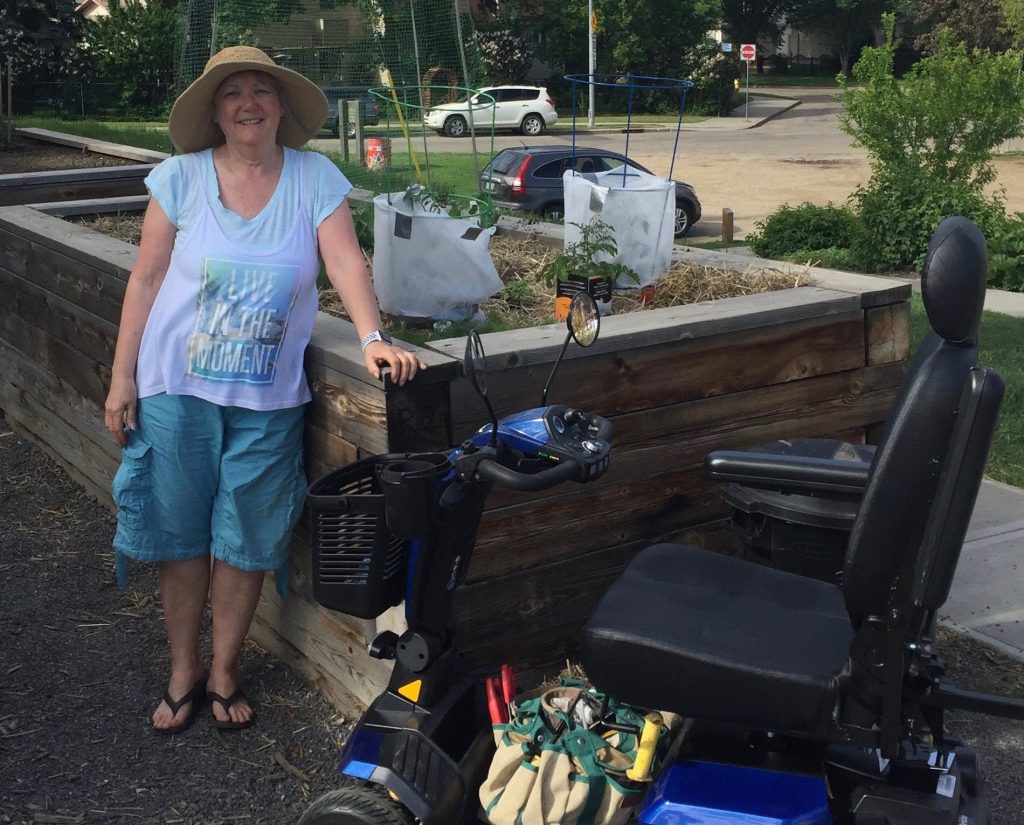Judy-Anne’s life is filled with numbers, the number of steps she takes in a day.

The first thing Judy-Anne does when she wakes up each morning is chart and resets her pedometer and iWatch to faithfully count her steps.
This is not because she is a fitness enthusiast, though she does monitor her activities carefully. Rather this reliance comes from myalgic encephalomyelitis, an illness that results in a multitude of symptoms that puts life at a standstill.
Judy-Anne contracted myalgic encephalomyelitis, ME for short, as well as chronic fatigue syndrome in 2000 but it wasn’t until a car accident in 2017 that she experienced the worse of her illness.
After the accident the chronic fatigue, fibromyalgia pain, irritable bowel syndrome, and other symptoms increased their hold on her life and made it necessary to start counting her steps and regulating all her activity.
“I guess what it’s come down to for me is that in order to stay relatively healthy and manage my illness I have to pace myself and I cannot exceed four thousand steps in a day,” Judy-Anne says.
Going past this boundary causes her to crash within the following days, with less energy and more pain ensuing. Additionally, the chances that any part of her body suddenly giving up increases— a symptom called post-exertional malaise.
“Four thousand steps isn’t very far. It’s basically about six blocks of walking, so three blocks away and three blocks back. And you walk that in your home usually in three or four hours,” says Judy-Anne.
By the time she got to an activity she would not have enough energy to get her back home again making it impossible for her to go out and do everyday things, including tending to her gardens.
Not only a way to spend her time, gardening helped to alleviate her financial obligations as she would grow vegetables to reduce her grocery bill.
At her best Judy-Anne managed four gardens: one in her backyard, one at the community garden, one on an empty lot in the community, and another at her friend’s house. After the incident though she could not maintain even one garden.
“I couldn’t even do my garden in my backyard that year,” Judy-Anne says. “[It was] completely out of the question.”
With only around three to four hours of energy a day, which were easily filled with charting her activities, managing her illness, feeding herself, going to physio and medical appointments there wasn’t more she could accomplish in a day.
With the confinements her energy levels placed, she did not have enough energy to clean, get groceries, or go to social events.
Judy-Anne pushed through until her therapist and doctor recommended a scooter in 2018, at which time she turned to Easter Seals Alberta and applied through the Accessibility Supports program.
Having had to wait to get a scooter with a little more power to handle the hills and valleys of her neighborhood, Judy-Anne gladly received her scooter recently.
“[Getting the scooter] felt like everything was going to be ok because I just needed to get on the scooter it was going to take me wherever I needed to go. All the stress and the fatigue that I feel from trying to get somewhere was relieved,” says Judy-Anne.
This allowed her to get back to her gardens. In fact, the community garden was the first place she went. She remembers how those she saw all waved at her, welcoming her back, and how she has been able to take on the Chairperson position at her community garden.
While she still doesn’t use the garden she had at her friend’s house because it has been given to other community members, Judy-Anne manages both the garden in her backyard and at the community hall.
“Being given a scooter is like being given back life because suddenly all the things you couldn’t do because you were going to have to walk now suddenly you can.”
She can now go for walks with friends in her neighborhood on her scooter and enjoy nature. She can go to the rec center and not have to worry about being too exhausted. She can go to festivals and enjoy the community atmosphere.
“[Having the scooter is] going to be huge for me,” Judy-Anne says.
She is also able to use the energy she is saving by using the scooter to participant in yoga and movement classes to stay active, as well as keep her joints and muscles strong.
“It’s helping to improve my health because the more I can maintain under four thousand steps a day the more manageable my illness becomes, the better I feel and the stronger I get.”
With her health increasing, Judy-Anne still deals with misunderstandings about her condition.
“People think that when you say [your health is improving],” says Judy-Anne. “They think that ‘Oh well your health is going to be improved, you’re not going to need that anymore.’ But that’s not how it works.”
Judy-Anne’s situation is different than many others who use scooters because they cannot move around without them. Instead she uses the scooter to help conserve her energy, which lets her do more with her day.
“This is a completely different situation and I get some strange looks sometimes because you know I not only look okay, I get off the scooter and I move around okay,” Judy-Anne says.
Despite seeming fine Judy-Anne knows that she will have the scooter for a long time, relying on it to have more energy for activities in her life.
Judy-Anne continues to monitor her steps but looks forward to trying new classes and activities she could not have done before.
“I’m so very very grateful to this program. I don’t know where— well I do know where I would be without this, I’d be struggling, and it would be very difficult to make any headway. I’d really be struggling,” says Judy-Anne.
To help people like Judy-Anne get back into their communities, please DONATE HERE.
